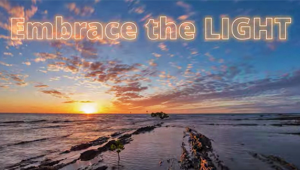How to Sell Your Outdoor & Nature Photos: We Get Tips from Four Successful Pros

Who are the clients buying outdoor and nature photography? How do you find these clients and make money? What are some of the special challenges you may encounter? In Business Trends this month we will address these questions and more with working pros Andy Biggs, Nick Simonite, Christopher Wilson, and Steven Wohlwender.
Shutterbug: What kind of outdoor or nature photography clients do you work with?
Andy Biggs: Commercially speaking, most of the business that I do is either related to guiding photographic safaris and workshops or selling large fine art prints through interior designers. These interior designers have found me through different means, mostly due to hearing about my fine art prints through other designers. One saw me on the TODAY Show and Googled my name and reached out to me. Sometimes it’s all about being visible and the rest takes care of itself. I started my photography business in 2002 and I relied on nothing but photography for income beginning in 2006.
Steven Wohlwender: My clients are advertising agencies, design firms, and company in-house marketing departments, since the vast majority of my images are used for advertising, marketing, and branding purposes.
Nick Simonite: For me, it’s landscape photography primarily. I was shooting for a client that drew me to the landscapes in Texas, where I started shooting personal work, then an image from that portfolio got picked up for an ad campaign so it basically started from there. Photography then became a viable source of income when I started shooting campaigns. The campaigns were for advertising and state tourism industry boards such as New York State and Texas State.
Christopher Wilson: In particular I love photographing large, sweeping landscapes always with someone in them. I’m much more interested in the human element being in the natural element. Surfing, mountain climbing, standing in a lake in Iceland, whatever, I love that interaction with the world. This kind of photography has led me to almost all the clients I’ve had such as Swami Surfboards, Icebreaker Outdoor Clothing, Diners Club, and Fiat.

SB: Regarding marketing tactics, what seems to work best for finding these clients given the different marketing tools available (advertising, direct mail, e-mail, website, sales calls, social media)?
Steven Wohlwender: People are diverse, so your marketing plan needs to be diverse as well to accommodate this reality. Cover all your bases given the time, money, and resources you have. But—and here is the critical key to not wasting all that time, money, and resources—be strategic in who you target. I know the profile and demographics of my potential clients. I target them as specifically as I can with all of the marketing and communication weapons I have, including relationships, networking, and research—that’s the target.
Andy Biggs: Word of mouth has been my single most effective way to market my business and services. Happy customers really matter in my industry, and when people are overwhelmingly happy they will go and talk about their experiences with other people, on their own.
Nick Simonite: Creating personal projects has always seemed like a great way to market myself. I feel they are the most organic way to market my work. My marketing has always depended on personal relationships and referrals. I put these personal projects out there with gallery shows. The people who come to these art shows are drawn to the images and can then relate to them in terms of their ad campaigns.
Christopher Wilson: I have no idea what really works so I do everything—advertising, direct mail, e-mail, website, sales calls, social media. It’s a shotgun approach to target as large of a population as possible but it has to be done. Having said that, if I were asked what the one best way to get clients would be, I would have to say meetings in person—no question.

SB: What is the biggest industry change you have seen in this field of photography in the last five years?
Andy Biggs: The biggest change has been an influx of photographic tourism. There are so many destinations and tour leaders in the marketplace, and as a consumer I would have a difficult time choosing between all of them. Thankfully I am on the other side and I spend more time and effort reaching out to current and past customers to see how I can serve their needs better.
Steven Wohlwender: The biggest change in the last five years is the devaluation of photos. For nearly 100 years, marketers and publishers have fueled the majority of the professional photographers (fine art aside, of course). Compensation to these photographers took a huge hit with the Digital Age, but the Instagram Age has devalued the photo to nothing. Praise—not cash—is the payment for the millions of photos each day shared by these marketers and publishers. I think there are two types of people in the world, the people who look at a superior product and see value in it, and the people who are price shopping. If they are the latter, there is an extremely good chance they will be a long, hard sell. Who has time for that?
Christopher Wilson: Probably the biggest change has been the growth of social media such as Instagram. Potential clients are looking all over the place for their next photographers. The problem becomes when potential clients confuse number of likes or followers with ability. Nadav Kander, for example, is one of the best photographers on the planet, in my opinion, and yet he has very few followers on Instagram, whereas there are so many horrifically bad photographers who have hundreds of thousands of followers. There is no correlation between ability and popularity.

SB: What recommendations would you make to a photographer looking to make a move into this field?
Steven Wohlwender: This is not a business where you can start by dipping your toe. It is all in or nothing. Measure your passion for this photography. Is it true love or only lust? Being a professional photographer is as wonderful as you can imagine. The elation is all I could ask for in a job, and the opportunities it has afforded me are priceless, but it is a business, and it is a job.
Christopher Wilson: To just follow your heart is my recommendation. I’ve always felt that if you create something that is really compelling to you, it’s going to be compelling to someone else. You have to do great work in order to get the great work you love, and that means going out and just shooting things you love just for the love of it. Shoot and the money will follow always—at least that’s been true for me. For example, I went out to document Speed Week at the Bonneville Salt Flats a few years ago, just for the fun of it, and that work led directly to assignments with Fiat and BMW.
Andy Biggs: The single best piece of advice is for them to understand how to run a business. Any business. Educate yourself on marketing strategies, how to keep your own accounting books, how to serve your customers, and how to offer things that are unique in the marketplace. Stand out. Be exceptional.
Nick Simonite: Start by building a supportive local community and touching on a little bit of everything in your geographic area. I am in Austin, Texas, and a lot of the people are friends or become friends so referrals are very important to me. I would recommend starting small, then building and focusing around your core business and community.
SB: What do you see as being your most difficult photography assignment or self-assignment? Maybe something that was a real learning experience you can share with our readers.
Nick Simonite: Every project poses unique challenges, but personal projects tend to be the most difficult to finish as there are no hard deadlines.
Steven Wohlwender: Photographing in Afghanistan came with more restrictions than anywhere I have ever shot. Generally, I want freedom to control as much of a production as possible, so dealing with restrictions made the setting less than ideal, but that is life, and “that’s production.” You can only control what you can control.
Andy Biggs: The most difficult assignments for me have been the ones where I am very uncomfortable. Usually this means a style of storytelling that I don’t have much experience with. For example, I am a nature photographer who primarily shoots African wildlife. I have been asked to shoot portraits, weddings, and commercial assignments ranging from architectural photography to staging and shooting food. All of these I put in the same category of challenge: those technical and creative situations that I have not done before. It takes an incredible amount of discipline to stay focused at the job at hand, even though my natural instinct is to only shoot in black and white and only a certain style. It’s great to be challenged, which is why I often say “yes” to these types of assignments.
Resources
Andy Biggs: andybiggs.com
Nick Simonite: nicksimonite.com
Christopher Wilson: christopherwilsonphotography.com
Steven Wohlwender: stevenwohlwender.com














































